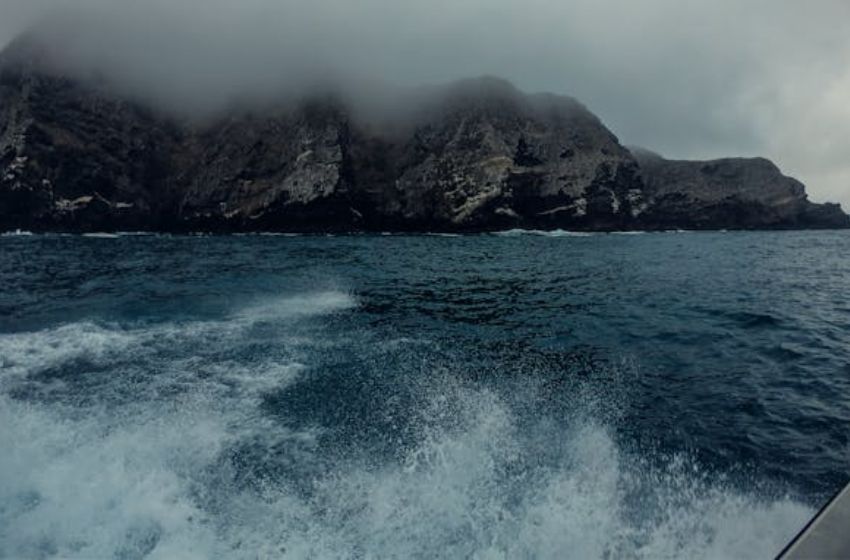“Mystery water” is a term that has sparked curiosity across multiple contexts, ranging from children’s educational activities to the mysterious nature of bodies of water. While it may be easy to overlook at first glance, the phenomenon of “mystery water” can be captivating in various ways. Whether used in fun science experiments or as a metaphor for the vast, unexplored oceanic mysteries, the idea of mystery water continues to intrigue individuals of all ages.
In this article, we will delve into different interpretations of what mystery water might be, from playful activities to natural phenomena that remain unexplained.
The Science Behind Mystery Water
In one interpretation, “mystery water” refers to a fun and educational activity for children. By creating a cloudy liquid, typically by mixing water, dish soap, and cornstarch, parents or teachers can hide objects inside the mixture, creating an engaging I-Spy game for toddlers. The cloudy nature of the water makes it more difficult to see the hidden items, turning the game into an interactive guessing game. This version of mystery water is often used in early learning environments as a hands-on way to stimulate children’s sensory exploration and critical thinking.
The scientific principle behind this kind of mystery water is simple: the addition of cornstarch creates a suspension that makes the water opaque. This cloudy appearance offers a unique texture and visual challenge, making it a great tool for teaching children how to observe and investigate their surroundings.
Mystery Water in the Natural World
Beyond children’s activities, “mystery water” can refer to the complex and often baffling aspects of the Earth’s oceans, lakes, and rivers. One well-known example is the phenomenon of “cold water mirages.” These mirages occur when colder air sits below warmer air, causing light to bend and making objects appear as though they are floating above the water or distorted in shape. This visual phenomenon, though scientifically explainable, can feel quite mysterious to the naked eye, reinforcing the sense of wonder people often experience when interacting with large bodies of water.
The ocean, in particular, has long been a source of mystery for scientists and explorers alike. From the Bermuda Triangle to underwater pyramids, there are countless stories and phenomena that remain unsolved. Even with modern technology, only a small fraction of the world’s oceans have been explored, leaving much of their depths shrouded in mystery. The concept of mystery water in this sense goes beyond a simple definition and taps into the unknown.
Mysteries of the Deep Ocean
The ocean is vast, covering over 70% of the Earth’s surface, and yet a significant portion of it remains unexplored. Within these dark and unknown depths lie countless mysteries, some of which may never be solved. For example, the Mariana Trench, the deepest part of the ocean, reaches nearly 36,000 feet and is home to some of the planet’s most peculiar life forms. These creatures have adapted to survive under extreme conditions, where sunlight cannot penetrate and pressures are immense.
The mystery of the Mariana Trench embodies the idea of mystery water. Despite numerous dives and explorations, it is still a largely uncharted part of our planet. Even though scientists have made significant strides in understanding the trench, there is still much to discover, particularly regarding the unique species that thrive in these extreme environments.

Water Anomalies and Unexplained Phenomena
There are numerous water-related anomalies that continue to perplex researchers. One such example is the Baltic Sea Anomaly, discovered by a Swedish exploration team in 2011. This underwater object, with its unique, almost metallic surface, has drawn theories ranging from a natural rock formation to a sunken UFO. Despite extensive investigations, the true nature of the Baltic Sea Anomaly remains a mystery, leaving it as yet another example of unexplained mystery water.
Other strange occurrences include underwater crop circles, which were initially thought to be created by mysterious forces. However, these intricate patterns have since been discovered to be the work of male pufferfish, which create the formations as part of their courtship rituals. These underwater “mysteries” remind us that what may seem mysterious at first can sometimes have a simple, natural explanation—yet the wonder and intrigue remain.
Cold Water Mirages: A Play on the Eyes
One of the most fascinating and visually stunning aspects of mystery water is the occurrence of cold water mirages. These illusions occur when layers of cold and warm air interact in ways that bend light, making objects on the water’s surface appear larger, smaller, or even floating above the water. Mariners and coastal dwellers have long been fascinated by these optical tricks, which sometimes lead to strange and seemingly supernatural sightings.
While cold water mirages are well understood by meteorologists and scientists today, they still evoke a sense of wonder. Seeing a boat appear as though it is floating above the water or watching an island distort into a shimmering, otherworldly shape can feel like witnessing magic. In this context, mystery water reminds us of how our natural world can play tricks on the senses.
The Role of Mystery Water in Human Imagination
The fascination with mystery water is not limited to scientific circles. Throughout history, water has often been associated with the unknown, serving as a symbol of the subconscious, the unexplored, and even danger. From ancient myths about sea monsters to modern-day mysteries like the Bermuda Triangle, water is a setting where the boundary between reality and the fantastical blurs.
One famous story that taps into the concept of mystery water is the legend of Atlantis, a supposedly advanced civilization that sank into the ocean. Though Atlantis is widely regarded as a myth, the story captures the human imagination’s deep-seated fascination with the mysteries of the sea. Water, in this sense, becomes a metaphor for the uncharted territories of the mind and the world.
Exploring the Future of Mystery Water
As we continue to explore our planet and its many secrets, mystery water will undoubtedly remain a topic of interest for generations to come. The more we learn about the oceans and other bodies of water, the more questions arise. What lies at the bottom of the deepest oceans? Are there underwater civilizations or geological features yet to be discovered?
For children and adults alike, mystery water can serve as a source of wonder and learning. Whether it’s a fun science experiment or an unsolved oceanic mystery, the concept of mystery water encourages curiosity and exploration.
Conclusion
Mystery water takes on many forms, from simple science experiments to deep ocean enigmas. Whether it’s the cloudy mixture used to hide objects in children’s games or the baffling phenomena that occur in the world’s bodies of water, the term embodies a sense of intrigue and wonder. Mystery water encourages us to ask questions, seek answers, and remain curious about the world around us, reminding us that there is always more to discover.
FAQs
What is mystery water in children’s activities?
Mystery water is a fun, cloudy mixture made from water, dish soap, and cornstarch, used to hide objects in games for children.
Why are oceans considered mystery water?
Oceans are often referred to as mystery water due to their largely unexplored nature, housing numerous unsolved phenomena.
What is a cold water mirage?
A cold water mirage is an optical illusion caused by temperature differences in the air above water, bending light and distorting objects.
Are there underwater mysteries we have yet to solve?
Yes, many underwater phenomena, such as the Baltic Sea Anomaly and the deep Mariana Trench, remain unsolved mysteries.
What is the most mysterious body of water?
The Mariana Trench, the deepest part of the ocean, is often considered one of the most mysterious places on Earth.

